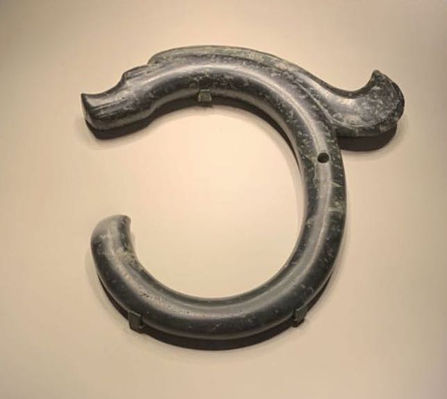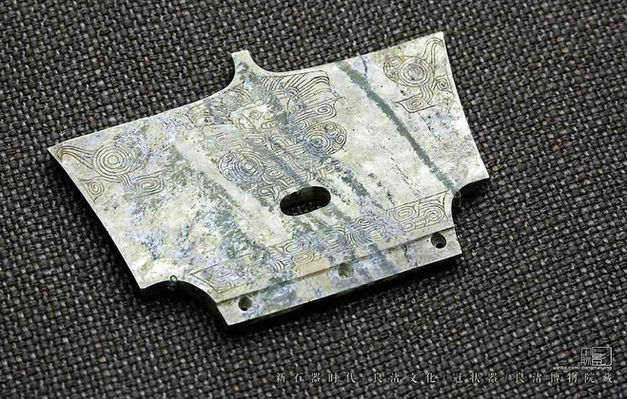Neolithic Era of China — Primitive Society and Mythical History
This epoch spans from the emergence of human beings to the establishment of the Xia Dynasty around 2070 BC by Yu the Great, who successfully led the people in defeating the Great Flood.
During this time, many primitive cultures were scattered in different places across China.
Gradually, they grew stronger, leading to numerous conflicts and merger wars.

Red-crowned Crane Bone Made Flute, Peiligang Culture (About 7000 — 8000 Years Ago) — Henan Antique Archaeology Institute (Photo by Dongmaiying)
Some Important Cultures in the Neolithic China
Dawenkou Culture
Dawenkou was an era with the rise of Private Ownership and Patriarchy and the gradual collapse of the Matrilineal system.
-
Around 4500 BC — 2500 BC
-
Shandong Province, East of China.
Achievements:
-
Cultivation of Millet and Keeping of Livestock.
-
Advanced Pottery of Different Colors.
-
Wide use of Stone, Wood, Ivory, Jade, and Bone Tools.
Unearthed Artifacts of the Dawenkou Culture (Photo by Dongmaiying)
Longshan Culture or Black Pottery Culture
Developed from the Dawenkou Culture, the Longshan Culture Entered the Bronze Age.
-
Around 2500 BC — 2000 BC
-
Shandong, Henan, Hebei, Shanxi, Shaanxi Provinces, etc., the Middle Kingdom Era of China.
Achievements:
-
Thin Fetal Black Pottery and Jade Articles showed the advanced technology of Longshan Culture.
Unearthed Artifacts of the Longshan Culture (Photo by Dongmaiying)
Hongshan Culture
Hongshan was an agricultural, Matrilineal culture with grand worship sites, altars, temples, and hierarchy.
-
Around 4000 BC — 3000 BC
-
Inner Mongolia, Liaoning, Hebei Provinces, North and Northeast of China.
Characteristics:
-
Delicate jade articles had clear ceremonial uses and were widely used in tombs.
Unearthed Artifacts of the Hongshan Culture (Photo by Dongmaiying)
Yangshao Culture
Yangshao was an ancient Matrilineal society that was made of village-scale clans.
In later centuries of Yangshao Culture, the Matrilineal system declined, while hierarchy, slavery, Private Ownership, and Patriarchal Commune appeared.
-
Around 5000 BC — 3000 BC
-
Shaanxi, Shanxi, Henan, Hebei, Inner Mongolia, Gansu, Qinghai, Ningxia, Hubei Provinces, the Middle Kingdom Area of China.
Achievements:
-
Yangshao was a further developed agricultural culture that contained millet, rice, vegetables, and livestock cultivation, with hunting and fishing activities as supplements.
-
Painted Pottery was quite exquisite during this era.
Unearthed Artifacts of the Yangshao Culture (Photo by Dongmaiying)
Majiayao Culture
Developed from the Westward of the Yangshao Culture, the Majiayao Culture officially entered the Bronze Age.
-
Around 3300 BC — 2100 BC
-
Gansu, Qinghai, Shaanxi, Ningxia Provinces, Northwest of China.
Achievements:
-
Highly Developed Painted Pottery.
-
The earliest unearthed bronze knife in China was from the Majiayao Culture.
Unearthed Artifacts of the Majiayao Culture (Photo by Dongmaiying)
Qijia Culture
Developed from the Westward of the Yangshao Culture, the Qijia Culture was a Patriarchal Clan Society that had entered the Bronze Age, which evolved hierarchy, Polygamy, and Human Sacrifice.
-
Around 2200 BC — 1600 BC
-
Gansu, Qinghai, Ningxia, Inner Mongolia Provinces, Northwest of China.
Unearthed Artifacts of the Qijia Culture (Photo by Dongmaiying)
Shijiahe Culture
Shijiahe was a Bronze Age civilization with grand worship ceremonies, city ruins, and exquisite jade articles.
-
Around 2800 BC — 2000 BC
-
Hubei, Hunan, Henan Provinces, Middle-South of China.
Unearthed Jade Artifacts of the Shijiahe Culture (Photo by Dongmaiying)
Hemudu Culture
Hemudu was an ancient Matrilineal society that consisted of clans.
-
Around 5000 BC — 3300 BC
-
Zhejiang Province, East of China.
Achievements:
-
Advanced Black Pottery Production.
-
Wide Use of Stone, Bamboo, Wood, and Bone Tools.
-
Earliest Cultivation of Rice.
-
Stilt Style Houses.
-
Utilization of Fabric.
Unearthed Artifacts of the Hemudu Culture (Photo by Dongmaiying)
Liangzhu Culture
Liangzhu was a well-developed culture with a ruling class, fancy palaces, about 3 million square meters big capital city, mature agricultural production, and an over 5000-year-old water conservancy system.
-
Around 3300 BC — 2000 BC
-
Zhejiang, Jiangsu Provinces, East of China.
Achievements:
-
Exquisite ritual jade articles, which were believed as magical objects that could connect with deities, were used in worship ceremonies and the burial of nobles.
They were the representative of the monotheistic religion, public power, and strict hierarchy of the Liangzhu Culture.
-
Unearthed delicate black pottery, fabric, ivory, and lacquer wares are concrete evidence of the mature social division of labor.
Unearthed Artifacts of the Liangzhu Culture (Photo by Dongmaiying)
Scientific Developments of Neolithic China
-
The invention of Acupuncture and Moxibustion.
-
Application of Terrace, which expanded cultivated farmland and decreased water and soil loss.
-
The invention of Sericulture.
-
Wide utilization of Pottery, Lacquerware, and Bronze Ware.
-
Invention and application of Bow and Arrow in wars.
-
Wide Cultivation of Rice, Millet, Soybean, Domestication of Pig, Fermentation of Wine, etc.
Unearthed Artifacts of the Neolithic of China (Photo by Dongmaiying)
The Classic of Mountains and Seas (Shan Hai Jing)
Finished around 5000 years ago, the Classic of Mountains and Seas had only pictures initially.
The descriptive Chinese characters were added centuries later.
This miraculous book includes about 40 states, 550 mountains, 330 rivers, over 100 historical figures, agricultural activities, customs, and more than 400 Mythical Creatures and their legends, in addition to Creation Myths, Mythical Worlds, and Mythstical Deities.

It is a combination of reality, myth, and legend; from the description of the wondrous and fantastic world in the book, people could find many prototypes even in the current world.
This book records an era of mysterious immortals and brave heroes with influential contributions.
The boundary between humans and celestials was quite blurring; supernaturals could come to the civilian world and help them, while excellent people could become immortals because of their outstanding accomplishments.
Together, they changed the world and made it a better place through their diligence, strong will, and exceptional courage.
This is the origin of Chinese people’s Ancestor Worship and the initial stage of Chinese culture.

Important People in the Neolithic of China
Next: Xia Dynasty (Around 2070 BC — 1600 BC) — the First Hereditary Kingdom in China
Related Articles:
Brief Introduction to Chinese History
Shang Dynasty (1600 BC — 1046 BC) — Empire of Bronze Age and Scripts on Oracle Bones
Zhou Dynasty (1046 BC — 256 BC) — Decency, Hierarchy, and the Feudalism System
Spring and Autumn Period (770 BC — 403 BC) — Great Philosophers and Contention of Warlords
Warring States Period (403 BC — 221 BC) — Wars Among the Seven Kingdoms
Qin Dynasty (221 BC — 207 BC) — Epoch of Great Unification
Han Dynasty (202 BC — 220 AD) — Golden Era of Legendary Civilians
Three Kingdoms, Jin, North & South Dynasties (220 — 589) — Wars and Conspiracy in Turbulent Times
Sui Dynasty (581 — 618) — Transient Age and the Inaugurator of Prosperity
Tang Dynasty (618 — 907) — Flourishing Golden Age
Five Dynasties and Ten Kingdoms (907 — 979) — Decades of Wars and Chaos
Song Dynasty (960 — 1279) — Wealthy Empire with Tragic Encounters
Yuan Dynasty (1271 — 1368) — Half Anarchism
Ming Dynasty (1368 — 1644) — Epoch of All Round Prosperity
Qing Dynasty (1636 — 1912) — Extreme Centralization and Closure
Famous Historical Figures in Ancient China






























































